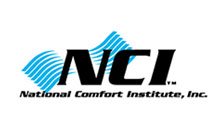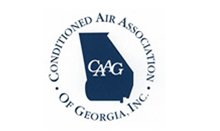The air conditioner is one of the most important inventions of modern times. Air conditioning has changed the world. It has become ubiquitous. Once regarded as a luxury, air conditioning is considered a necessity today. From homes to shopping malls, air conditioners are everywhere.
One of the most common questions that homeowners looking for a new air conditioning system ask themselves is, how much money should they set aside for a new unit? Here, we try to answer this question.
How Much Does a New Central A/C Cost to Install?
On average, homeowners spend $5,600 on a new central A/C. Most homeowners spend between $3,700 and $7,400. The actual amount of money you will have to spend will depend on several factors, such as the type of A/C, installation cost, and whether ductwork repair is required.
If you have a large home that requires extensive ductwork, expect to spend up to $10,000. A/C installation and repair is better left to the experts due to three reasons:
- It can be complex
- Only a state-licensed contractor can obtain permits required for A/C installation
- Exposure to refrigerant chemicals such as freon can cause symptoms of refrigerant poisoning. Only an experienced and licensed technician can legally handle these chemicals
Central A/C Prices
Expect to pay between $1500 and $4000 for a new central A/C system.
Central Air Conditioning Unit Prices by Brand
- American Standard—$3,200
- Lennox—$3,400
- Amana—$2,600
- Trane—$3,300
- Rheem— $2,500
- Carrier— $3,200
Central Air Conditioning Unit Costs by Type
- Central A/C Units: The duct system of these units is usually combined with the heating system of the house. Expected price:$3,700-$7,400
- Ductless Split Systems: These systems can be divided into two types – mini-split systems and central systems (installed as internal and external units). Expected price: $2,000-$14,500 (installed)
- Window Air Conditioners: Are added in windows as a single system. Expected price: $150-$500 (installed)
- Portable Units: A portable unit is offered as a split, hose or evaporative system. Can be easily moved around the house.
Before buying an A/C, consider your needs. If you are confused and cannot decide which system is right for you, consult experts at a reliable air conditioning company in Suwanee. Remember, the type of A/C you opt for will have a significant impact on your overall costs.
Ductless Mini-Split A/C Systems
Expect to spend between $2,000 and $14,500 on a ductless mini-split A/C system. These systems are a great option for homes without ducts and vents. The cost of installing a ductless system is almost equal to the cost of adding a new central A/C system. If, however, ducts and vents are to be added, the cost can rise by two times.
Central Air Conditioning Unit Installation Cost
Most homeowners spend between $3,700 and $7,400 on A/C installation. When selecting the type of system for your house, your air conditioning repair expert in Decatur will consider all important factors at play such as the size of the unit needed and your energy-efficiency requirements.
HVAC contractors charge an hourly rate or a flat rate. Your contractor will charge you for labor and materials, such as refrigerant chemicals. Talk to your contractor to check whether you can cut costs by buying your unit yourself or using existing ductwork (if any) in your home.
How Much Does it Cost to install a 3-ton and 4-ton A/C Unit?
On average, families spend $3,800 to install a 3-ton A/C unit. The actual cost can go up to $5,000. Before you hire a professional for A/C installation, remember to get an estimate.
Most homeowners pay around $4,200 to install a 4-ton A/C. There are multiple cost factors at play. You can end up spending up to $5,000 or more. Ask an expert to assess every factor at play and provide an accurate estimate.
14-SEER and 16-SEER A/C Unit Cost
Expect to pay between $3,000 and $6,000 to install a 14-SEER unit. The cost of installing a 16-SEER unit ranges from $3,700 to $9,000. Though 16-SEER units are more expensive than their 14-SEER counterparts, they are also more energy-efficient, which means you will save more with a 16-SEER unit in the long run.
Installation Cost of a Central System for a 1,200 Square Feet House
Expect to spend between $3,000 and $4,000 to install a central unit for a 1,200 square feet home. The price will vary depending on the unit’s SEER rating, and whether or not ductwork is to be installed or repaired.
Air Conditioner Replacement Cost
Most people spend $5,000 to replace their air conditioner. If you have a big home, expect to spend up to $12,500. Other factors that can impact your overall cost are the labor required to remove and dispose of the old system, A/C brand and type, and ductwork complexity.
Add Central Air to Forced Air Heat
Many central A/C systems use the furnace blower to distribute conditioned air throughout the home. If you do not have a central heating system, consider installing a heat and air conditioning system. If you already have central heating, use the existing fans and ducts.
Do You Need Ductwork?
New homes usually have ducts and vents in place. If, however, you live in an old house, check whether it has an old convection heating system or baseboard. Install ducts and vents to provide the air conditioning with a flow system. This is the right time to check and replace (if necessary) your heating system. Many air conditioning companies in Suwanee recommend installing a split ductless system that uses tiny tubes to distribute conditioned air throughout the home. This eliminates the need for large ducts and vents.
Consider Upgrading Your Insulation
The better your home’s insulation, the lower your cooling costs. If you have poor insulation, conditioned air will escape, forcing your system to work harder. To prevent this from happening, upgrade your insulation. Though upgrading your insulation will cost you between $1,400 and $2,300, you will save a ton of money in the long run.
Tax Breaks
The federal government is offering tax breaks on energy-efficient home products. Look for an energy-efficient product that meets standards set by the Consortium for Energy Efficiency or CEE.
Though the IRS won’t check the manufacturer’s certificate when you avail the benefit, remember to store it in a safe place as you may be asked to produce it during an audit to prove that you purchased a qualifying product.
*You can expect to save up to $300 on a split-system air conditioner or packaged air conditioner
*Qualification criteria
- For split system air conditioners – SEER >=16 or EER>= 13
- For packaged air conditioners– SEER >=14 or EER>= 12
Tips to Get the Most Out of Your A/C Choosing the Right A/C for Your Home
Follow these tips to improve air conditioning performance:
- Size your A/C correctly. Ask your contractor to measure your home and perform load calculations
- Missing, leaking, or damaged ducts can drag down the performance of your system. Have your ducts inspected and repaired by a qualified technician
- Have ducts and vents adjusted for optimal airflow
- Check and top-up refrigerant levels periodically
Central A/C Warranties
Central A/C units come with a product warranty that usually lasts for 5-15 years. Central A/C warranties typically cover the equipment and unit components. Contractor warranties usually cover labor for repairs and additional works such as wiring the unit to the home or encasing it in protective metal.
Manufacturers of products with indoor air quality modifiers offer a separate warranty (typically less than the warranty on central units). Consider investing in an extended warranty. A typically extended warranty covers:
- Cost of parts to be replaced
- Additional repair costs (performed by a third party)
There are, however, many limitations of extended warranties. They usually cost more than maintenance. Many plans may require you to pay for repairs upfront and follow up for reimbursements. Before you invest in an extended warranty, consider your needs and weigh up the pros and cons.
A/C Unit Size Calculator
The importance of selecting the right-sized air conditioner for your home cannot be emphasized enough. A unit too small for your home will fail to cool your rooms, whereas an oversized unit will not only cost more but also consume more energy than a properly sized system.
A good rule of thumb is that every 500 or 600 square feet require a ton of cooling. This, of course, will vary depending on the size of your home.
To determine what size unit your home requires, your contractor will perform a load calculation. The professional will consider all important factors, such as your home’s square footage, size, shape, orientation, and climate.
The professional will check your home’s insulation and examine leaks, seals, and existing ducts or vents.
Your contractor will perform different computations. They will analyze the characteristics of your home air conditioner and determine the amount of air it will lose. They will factor in environmental considerations such as geography and solar rays. Based on their findings, the professional will determine the appropriate size for your system.
Professionals perform two types of Manual load calculations:
- Whole House: This calculation is performed to determine the load for an entire house with existing ductwork
- Room by Room: The calculation is done to determine the load in every room
Should You Hire a Contractor to Install Your Central A/C or Do It Yourself?
The way your central unit is installed will have a major impact on its performance and longevity. If you decide to do everything yourself, you may commit mistakes that will cut short the service life of your system. Plus, installing a central unit involves handling the refrigerant, a harmful chemical.
To steer clear of safety risks, leave the task to a professional. After your A/C is successfully installed, your contractor will provide you with a list of must-dos to get the most out of your system and extend its life expectancy.
Frequently Asked Questions
How much does a 20-ton Central Air Conditioner Cost?
Expect to spend up to $10,000 for a 20-ton central A/C unit. The price of your system will depend on a number of factors, such as the type of insulation used, the amount of copper piping, and your system’s efficiency and life expectancy.
What is the Difference Between 14-SEER Models and 16-SEER Units?
Seasonal Energy Efficiency Ratio or SEER is the ratio between a unit’s cooling output and the total energy input. The higher the SEER rating of a model, the more energy-efficient it is. All new air conditioners must be at least 14 SEER.
Though a 16-SEER model costs more than a 14-SEER unit, it consumes less energy. A study estimates that a 16-SEER unit uses 13 percent less energy to produce the same amount of cooling as a 14-SEER model.
Some other differences between 14-SEER A/Cs and their 16-SEER counterparts are:
- 14-SEER units usually have a single-stage compressor while most 16-SEER units have a dual-stage compressor
- Some 16-SEER units have two-speed condensing fans and blower motors
- 16-SEER units typically have a longer run time (thanks to their two-stage compressors) than 14-SEER models
How to Add Freon to a Central Air Conditioner?
Follow these steps to add freon to your central A/C unit:
- Turn off your system and the circuits that supply power to it
- Exposure to freon can cause symptoms of refrigerant poisoning. To protect yourself, put on your goggles, breathing mask, and gloves
- Locate the source of the leak
- Attach your repair kit and seal the leak
- To prepare your system for recharge, reconnect the gauges to the unit and temperature gauges to the lines. Make sure you are getting a clear reading
- Start adding refrigerant to the unit. Add small amounts at a time. Maintain a time gap of 10 minutes between additions. To prevent the substance from getting into the compressor, place the refrigerant container in an upright position
What Are the Best Central Air Conditioner Brands?
Some of the most loved air conditioner brands are:
- Carrier
- Trane
- Rheem
- Amana
- Bryant
- American Standard
- Lennox
Should I Opt for a Central A/C? Is it Worth the Cost?
When determining whether central A/C is right for your home, consider your climate. Central A/Cs are particularly effective in hot, arid climates. In milder zones, window units could be adequate.
How long does it take to install a Central A/C?
It can take an installation professional 1-5 (or more) days to install a central A/C unit. The main factors that will impact the length of time it takes to install your system are:
- The size of your home
- Whether you are installing a new system or replacing an old unit. Installing a brand new unit will take longer as the professional will have to install almost everything, including the thermostat and ductwork
- The type and size of your system and its location
What is a British Thermal Unit?
The British thermal unit or BTU is a unit of heat. Put simply, it is the amount of heat required to increase the temperature of a pound of water by one degree F.
How Long Do A/C Units Last?
With proper maintenance, a typical A/C unit can last between 15 and 25 years.
What Are EER and SEER Ratings?
SEER or Seasonal Energy Efficiency Ratio of an A/C is the ratio between its cooling output and total electric energy input. Energy Efficiency Ratio or EER of a system is the ratio between its output cooling energy and input electrical energy.


















